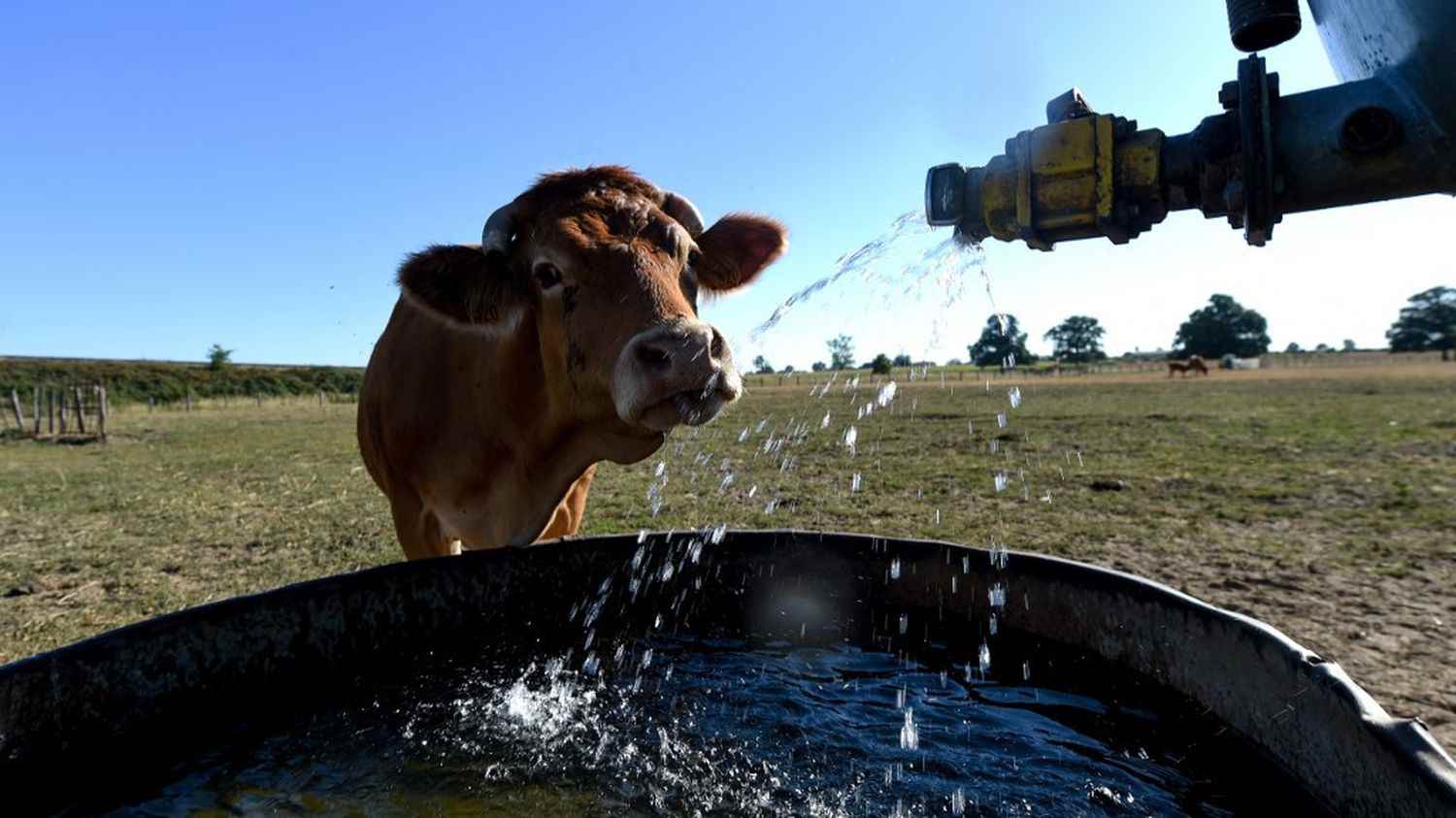Fifteen departments on the Atlantic coast, including Brittany, are placed by Météo France in heat wave red vigilance on Sunday July 17. In this period of heat wave, it is necessary “ensure animal welfare during this time”, alerted Sunday July 17 on franceinfo Serge Zaka, doctor in agroclimatology at ITK, specialist in the effects of climate change on agriculture. Serge Zaka specifies that there is “a lot of adaptation“to do for breeders during these times. According to him, “it’s a foretaste of what may happen” in the future everywhere in France. We must therefore “observe the behavior of animals, to adapt in the next decades“, advises the agroclimatologist.
>> Intensity, duration, mortality… We compared the heat waves that have hit France since 1947
franceinfo: Are the animals particularly suffering at the moment?
Serge Zaka: Yes. Animals do not have the same sensitivity thresholds as humans. A dairy cow, for example, from 25 degrees it has a decrease in its rumination. She eats less. From 31 degrees, it produces less milk. And from 40 degrees, we begin to have much greater stress which can impact reproduction in particular. So yes, it has impacts on animal welfare. This is important in today’s society where we think a lot about animal welfare.
“Each day, we can have 10 to 40% reduction in milk depending on the temperature”.
Serge Zaka, agroclimatologistfranceinfo
This also has an impact on the farmer’s income. Combined over the entire heat wave, this results in significant losses.
Do animals that stay locked up suffer more?
Absolutely. Most livestock buildings that were built 30 or 40 years ago are not suitable for this type of temperature. There is a lot of work at the level of the Ministry of Agriculture to bring these buildings up to standard. And in addition, enclosed animals, typically poultry and pigs, are rather at ground level. And it is at ground level in general that is the hottest. Even in buildings, they can feel temperatures 3 or 4 degrees higher than what a human can feel. So, there, we can very locally exceed the lethal temperature threshold, especially in Brittany for all pigs, and also in the south of France for poultry. And that’s where you can have mortalities. I invite all farmers to take care of animal welfare during this heat wave.
What is there immediately to adapt agriculture and livestock to this period of heat wave?
In the long term, it is the livestock buildings that need to be reviewed. But in the short term, there is a lot of adaptation. For example, there is ventilation to be put in place, for example fans, misters. There is a modification of the food rations to be made. Rather feed the animals during cool hours, where it is coolest, in the morning and in the evening. This is a bit what we also do for humans. What we do for humans is what we have to reproduce for animals. For cattle that are outdoors, either they can be kept indoors if the building meets climatic standards, or when there is pasture, they must be put in shaded pastures. It’s just common sense. We’ve been talking about this heat wave for about a week now. I hope the protection systems are in place.
Is the heat wave taking by surprise part of the agriculture in Brittany which has not had time to adapt in recent years, whereas in the slightly warmer regions, the South-East or the valley du Rhône, agriculture has already begun to evolve?
Even in Brittany, agriculture began to evolve. There, we are talking about a heat peak. It is not a heat that we will have all the rest of the summer. It’s a heat peak that will last one to two days. The good news is that in one or two days, we don’t have what is called a thermal accumulation which can stress these animals even more, a body fatigue which sets in, as for humans. This body fatigue can lead to even more damage, especially to reproduction. But it is a foretaste for Brittany of what could happen. Because in the IPCC projections, it could last longer and be more frequent. It’s a foretaste of what can happen. So you really have to observe the behavior of the animals, to then better adapt in the next decades, to face this type of event. The vigilance map of Météo France, the green, orange, red, concerns men, but there is not yet an equivalent for animals and I think that it is urgent to start working on this system.
